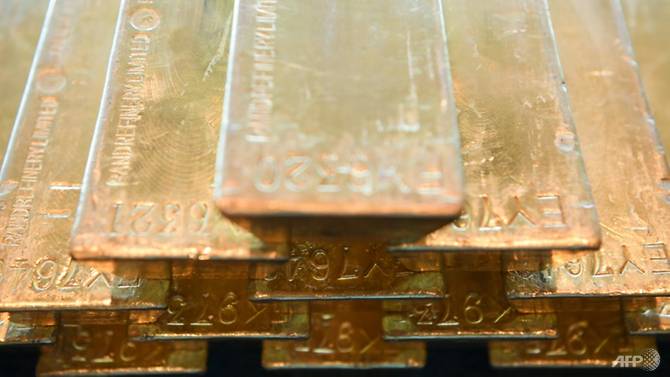Gold demand hits lowest level since 2009
 |
| A plunge in India due to tax and currency measures has sent global demand to gold to its lowest level since 2009. (AFP/Arne Dedert) |
World demand in the three months to the end of September fell to 915 tonnes compared with one year earlier to stand at the lowest level since the third quarter of 2009, the WGC said in a statement.
"What drove the demand to be weak was first and foremost India," John Mulligan, a Council director, told AFP.
"If you look at the figures, (Indian) jewellery demand was down 25 per cent compared to the third quarter of 2016 and coin demand 23 per cent" lower, he added.
India is the world's second-biggest purchaser of gold behind only China but has seen demand hit by a series of government measures, including a new tax system and anti-money laundering regulation.
In China, demand for gold jewellery jumped 13 per cent in the reporting period and soared 57 per cent for coins.
"The trend in the market is towards what they call 3D hard gold," explained Mulligan. "It's actually pure gold but it uses technology which means the pure gold is given a very hard surface, but it's a light piece, usually hollow."
In Britain, "demand was hit by pre-Brexit jitters, with consumers uncertain as to the likely economic impact of" the country's departure from the European Union, the WGC said.
The US was the best-performing industrialised Western jewellery market.
"With demand of 26.9 tonnes, the US saw its strongest third-quarter since 2012," the Council said.
"The sound economic and employment environment has supported consumer sentiment this year" in the world's biggest economy.
On Thursday, the price of gold stood at US$1,283.71 an ounce, down from US$1,284 late on Wednesday.
"Gold has been trading sideways lately as the market can't seem to make its mind up which way it is heading," CMC Markets analyst David Madden said in a note to clients Thursday.
What the stars mean:
★ Poor ★ ★ Promising ★★★ Good ★★★★ Very good ★★★★★ Exceptional
Latest News
More News
- Banks boost provisions as bad debt eases towards year-end (December 02, 2025 | 16:52)
- Investor accounts surge as stock market breaks records (November 28, 2025 | 18:14)
- Standard Chartered flags global infrastructure financing gap (November 28, 2025 | 18:00)
- Ho Chi Minh City taps Ant International to strengthen fintech and IFC ambitions (November 27, 2025 | 10:00)
- Nam A Bank and GCPF partner on climate adaptation finance (November 24, 2025 | 19:00)
- Thailand’s Café Amazon exits Vietnam after five years (November 22, 2025 | 12:56)
- PVT Logistics debuts on HSX (November 21, 2025 | 14:01)
- JBIC and BIDV join forces to back Vietnam’s green transition (November 19, 2025 | 15:50)
- Vietnam’s financial sector drives $1 billion IPO surge (November 19, 2025 | 15:44)
- Bank stocks gain appeal on strong credit growth and expanding ecosystems (November 18, 2025 | 15:22)


















 Mobile Version
Mobile Version